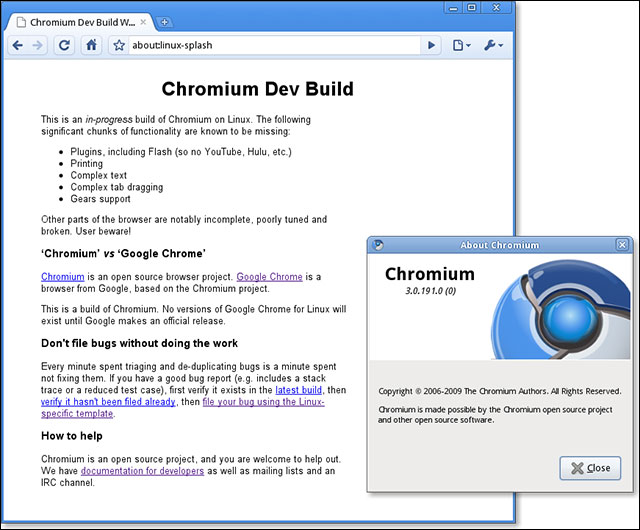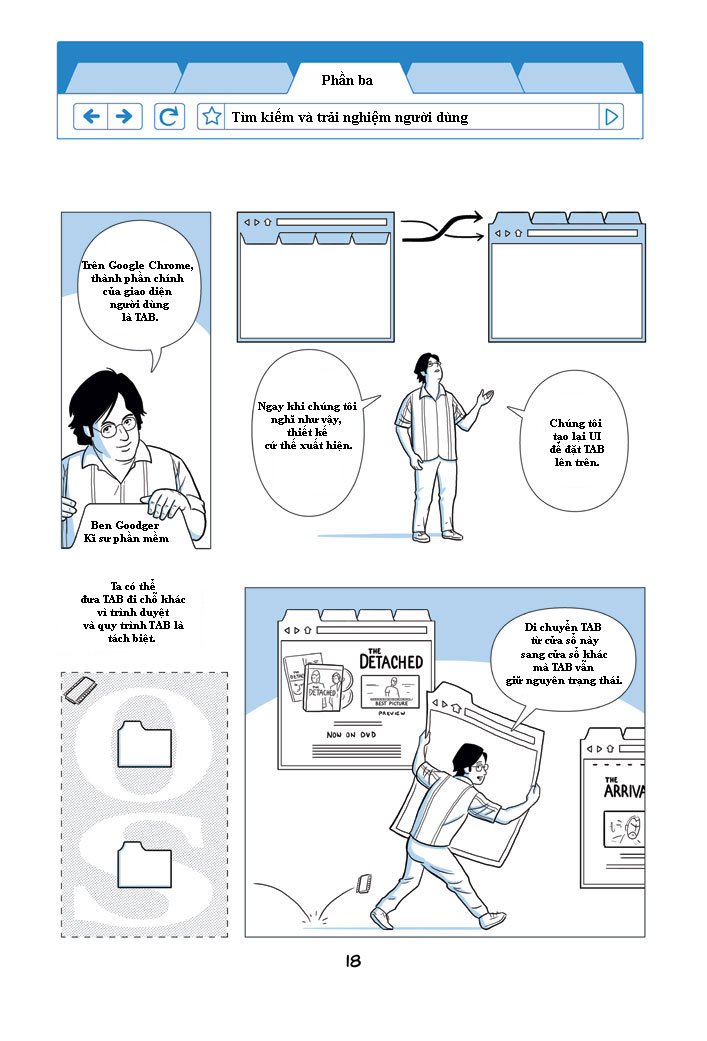Happy birthday Google Chrome is 10 years old
Chrome is one of the most important and successful products Google has ever released.It started the revolution to switch to sandbox operation and release faster releases for modern browsers.In the early days of September, we celebrate the 10th birthday of this browser.

Google Chrome 3.0 runs on Linux
On September 1, 2008, Google introduced a new browser on its blog page, saying it wanted to develop a browser specifically designed for complex web applications, operating in the same way as a sandbox. onions.
The sandbox is the way in which browser tabs work independently, in which if one tab crashes, the other tabs won't be affected.This helps to increase Chrome's speed and stability, along with the V8 JavaScript engine that they still perform many tweaks on.
On the same day, Google launched 39 comic pages drawn by Scott McCloud to explain how the browser works.

A picture of an introduction to Chrome 10 years ago
Google uses components from Apple's WebKit rendering engine and Mozilla's Firefox engine, making Chrome's source code completely open under the Chromium project name.Chrome focuses on web standards, respects HTML5 and also passes both ACid1 and Acid2 tests at the time of release.This is a big step when Microsoft is struggling with web standards in its Internet Explorer browser.
The beta for the Windows operating system until September 2 has just been released, and the first Stable version has not been released until December.Chrome for Mac and Linux has Beta versions in December 2009 and was completed by 5/2010.Google Chrome on Android released on 2/2012.
Chrome is not only influential in the browser world but also in the computing industry.Many browsers and applications use Chrome's Blink engine, including Opera, Steam, Samsung Internet and anything using Electron.Chromebooks also occupy more and more market share.
Chrome's group said there would be a special thing on this occasion.10 years has been a success, hope 10 years Chrome will continue to bring memorable things to both Chrome and users.
See more:
- Google Chrome and Firefox, which browsers "consume" more RAM?
- Top 10 most popular browsers, Google Chrome tops, Second IE
- Following the trail of Internet Explorer 6, does Google Chrome fail?
You should read it
- Chrome browser on Windows computer crashes, this is what you need to do
- Google put a hand on the tool bar on Chrome
- 10 utilities on Chrome you should not ignore
- To speed up Chrome browser, apply these tricks
- Google Chrome is now 23% faster, have you tried it?
- Google Chrome temporarily prevents sideload of extensions
- 6 useful features on Chrome browser users should know
- Google launched Chrome 33, patched 7 new security bugs
May be interested
- Google Chrome has a new logo after 8 years
 google has re-branded the chrome web browser after 8 years. at first glance, chrome's new logo seems to be no different from the old logo with a circular design with 4 distinctive colors that appeared from the 2008 logo version.
google has re-branded the chrome web browser after 8 years. at first glance, chrome's new logo seems to be no different from the old logo with a circular design with 4 distinctive colors that appeared from the 2008 logo version. - Good and funny birthday wishes for wife
 a birthday wishes to your beloved wife is a meaningful spiritual gift that every wife wants to receive. tipsmake.com.com has compiled good, meaningful, funny, brief birthday wishes for your wife, please refer to them.
a birthday wishes to your beloved wife is a meaningful spiritual gift that every wife wants to receive. tipsmake.com.com has compiled good, meaningful, funny, brief birthday wishes for your wife, please refer to them. - Video 30 years of Tetris 'puzzle game' history
 born exactly 30 years ago in the soviet union, the tetris puzzle has overcome the test of time to become the most popular game of all time, overwhelming both pokemon and mario in terms of players.
born exactly 30 years ago in the soviet union, the tetris puzzle has overcome the test of time to become the most popular game of all time, overwhelming both pokemon and mario in terms of players. - Google extended the life of the Chrome OS device by 1 year
 google has officially announced software support on chrome os-based devices for at least 5 years after the product was officially launched, expanding for a year longer than before.
google has officially announced software support on chrome os-based devices for at least 5 years after the product was officially launched, expanding for a year longer than before. - The most beautiful and unique birthday cakes
 if you are wondering if you want to choose a birthday cake to give to your friends, relatives and spouses, please refer to the suggestions below. surely it will be the best gift for those you love.
if you are wondering if you want to choose a birthday cake to give to your friends, relatives and spouses, please refer to the suggestions below. surely it will be the best gift for those you love. - How to create birthday invitations on computer, phone
 previously, network administrator has guided you to create many online cards. and in this article, you will have more birthday invitation card templates for friends and relatives to attend the birthday party.
previously, network administrator has guided you to create many online cards. and in this article, you will have more birthday invitation card templates for friends and relatives to attend the birthday party. - The 'evolutionary' history of the Google logo
 today is google's 19th birthday, let us look back on the evolution of the google logo over the years.
today is google's 19th birthday, let us look back on the evolution of the google logo over the years. - Google Chrome is now 23% faster, have you tried it?
 google has been continuously improving the performance of its chrome web browser, and you are about to see the biggest leap forward. launched in chrome version 91 are a number of changes that make the browser up to 23% faster.
google has been continuously improving the performance of its chrome web browser, and you are about to see the biggest leap forward. launched in chrome version 91 are a number of changes that make the browser up to 23% faster. - Where is the origin of blowing candles in your birthday?
 the birthday organizer will blow out the candles in the hope that the moon god will bring them the best. because it is believed that in lit candles contain a mysterious power and when the candles are blown out, all wishes will come true.
the birthday organizer will blow out the candles in the hope that the moon god will bring them the best. because it is believed that in lit candles contain a mysterious power and when the candles are blown out, all wishes will come true. - Fun Birthday Photo Ideas for All Ages
 this article will give you great birthday photography ideas and concepts for all ages, including everything from random moments to posed shots.
this article will give you great birthday photography ideas and concepts for all ages, including everything from random moments to posed shots.










 Google, Apple and many other large companies employing employees no longer require a college degree
Google, Apple and many other large companies employing employees no longer require a college degree iPhone X 2018 has not been released and has a special version, gold plated with 18 Karat cost 2.7 billion
iPhone X 2018 has not been released and has a special version, gold plated with 18 Karat cost 2.7 billion Android collects user data even when the device is not used 50 times more than iOS
Android collects user data even when the device is not used 50 times more than iOS Computer design trends of manufacturers in the future
Computer design trends of manufacturers in the future The new Snapdragon will be manufactured under 7nm process, support 5G
The new Snapdragon will be manufactured under 7nm process, support 5G I doubt these unique technology applications will appear in the world and of course can only be Japan
I doubt these unique technology applications will appear in the world and of course can only be Japan